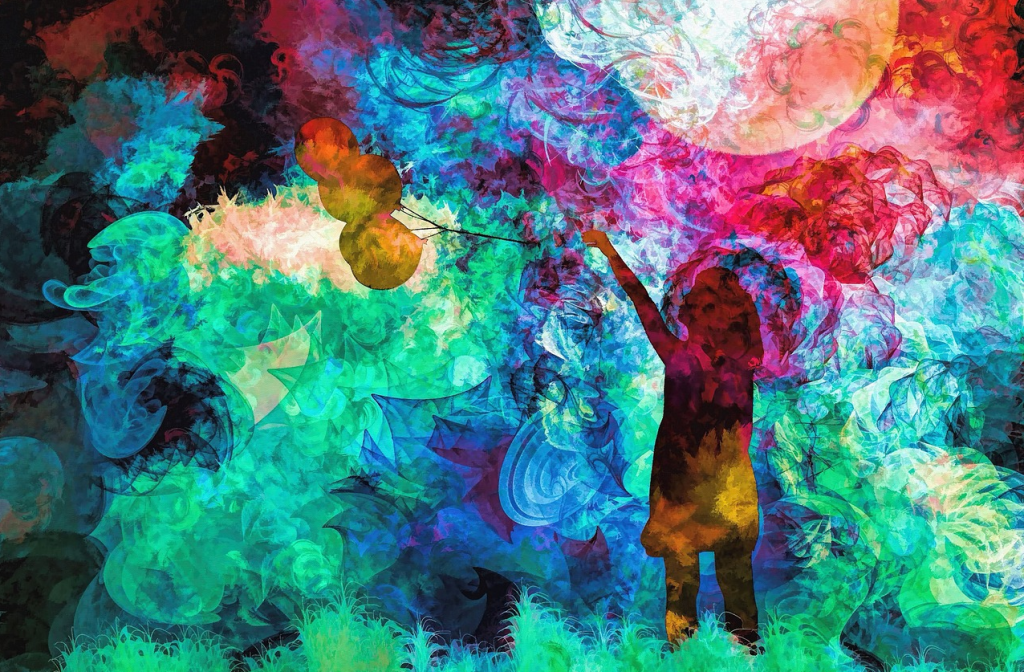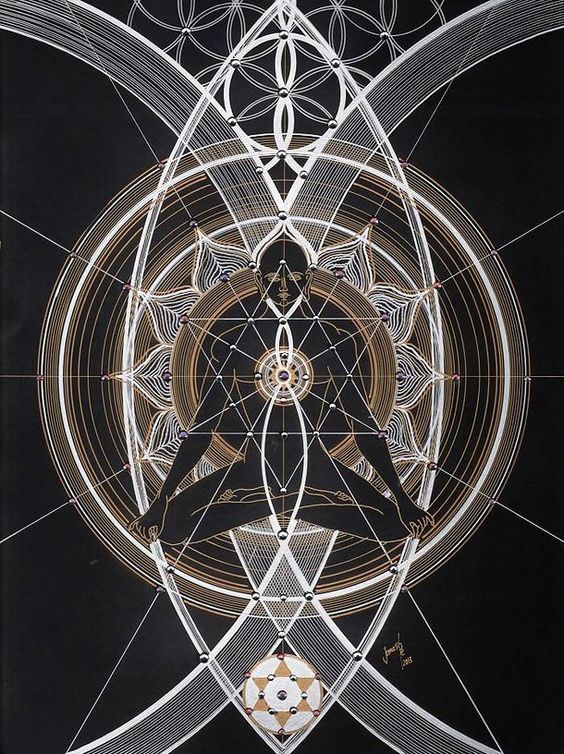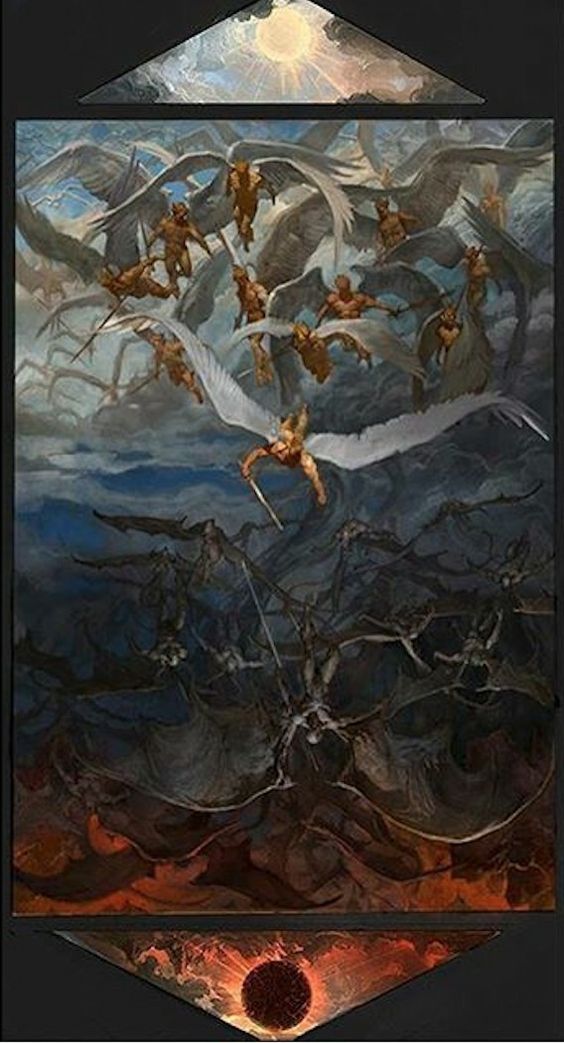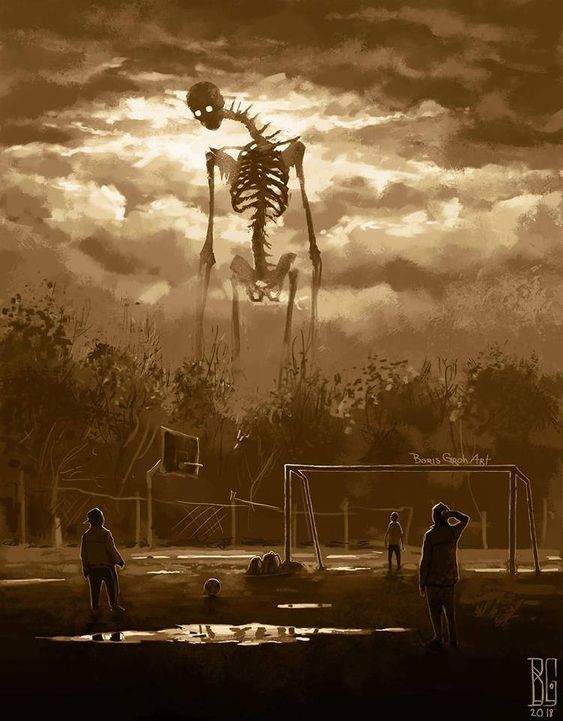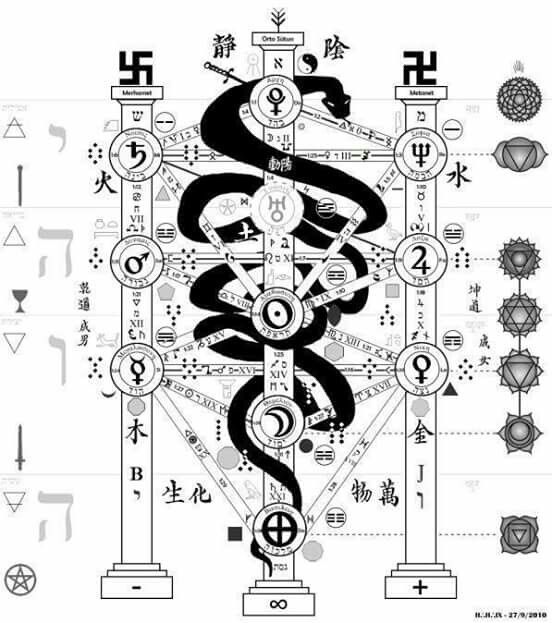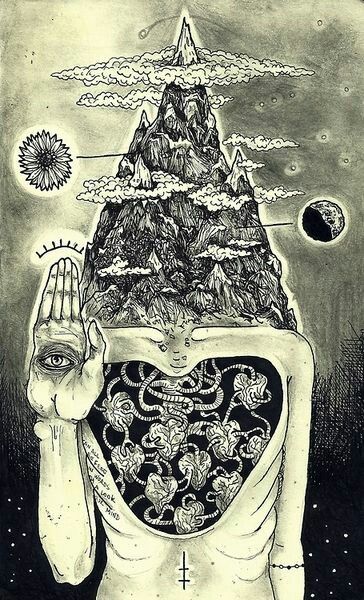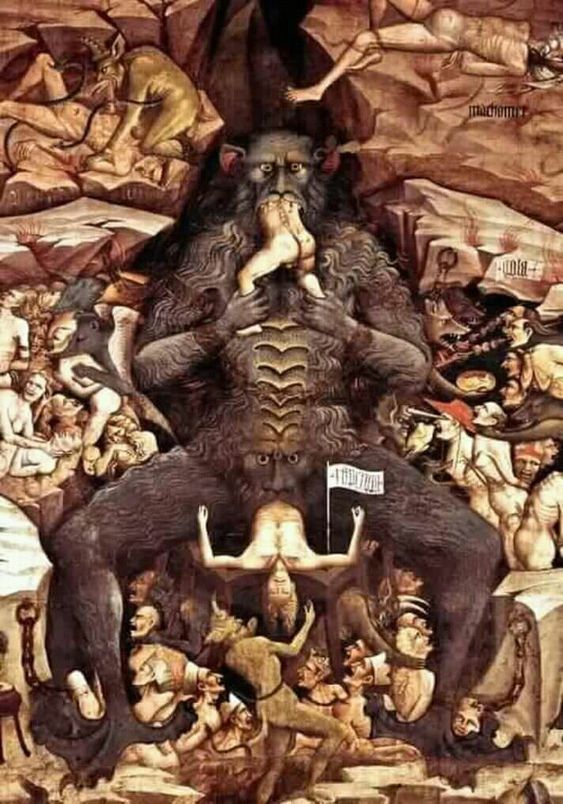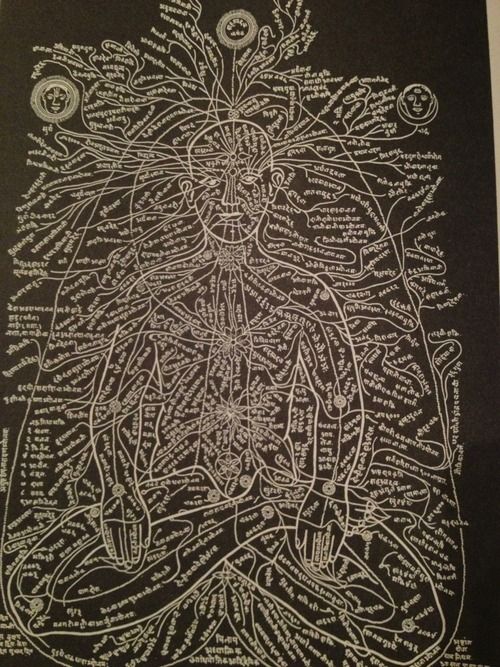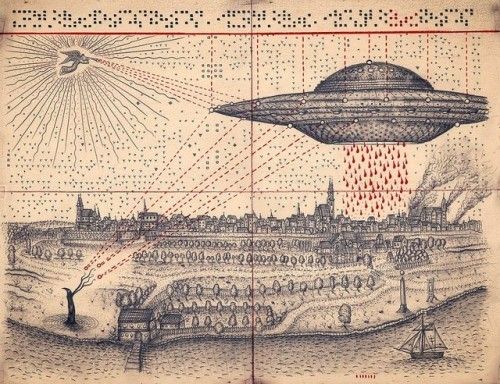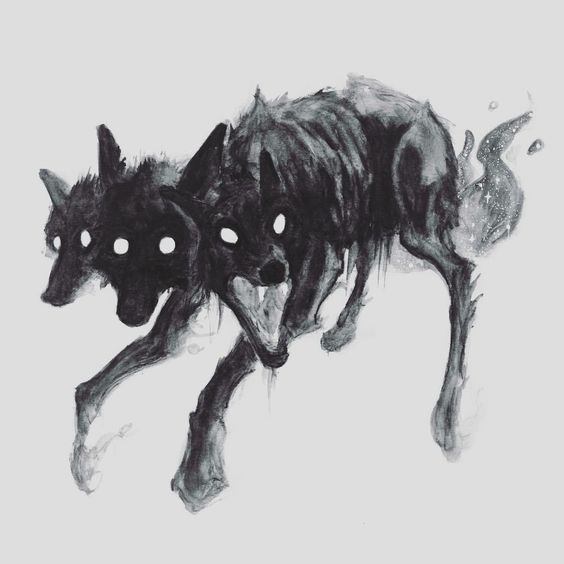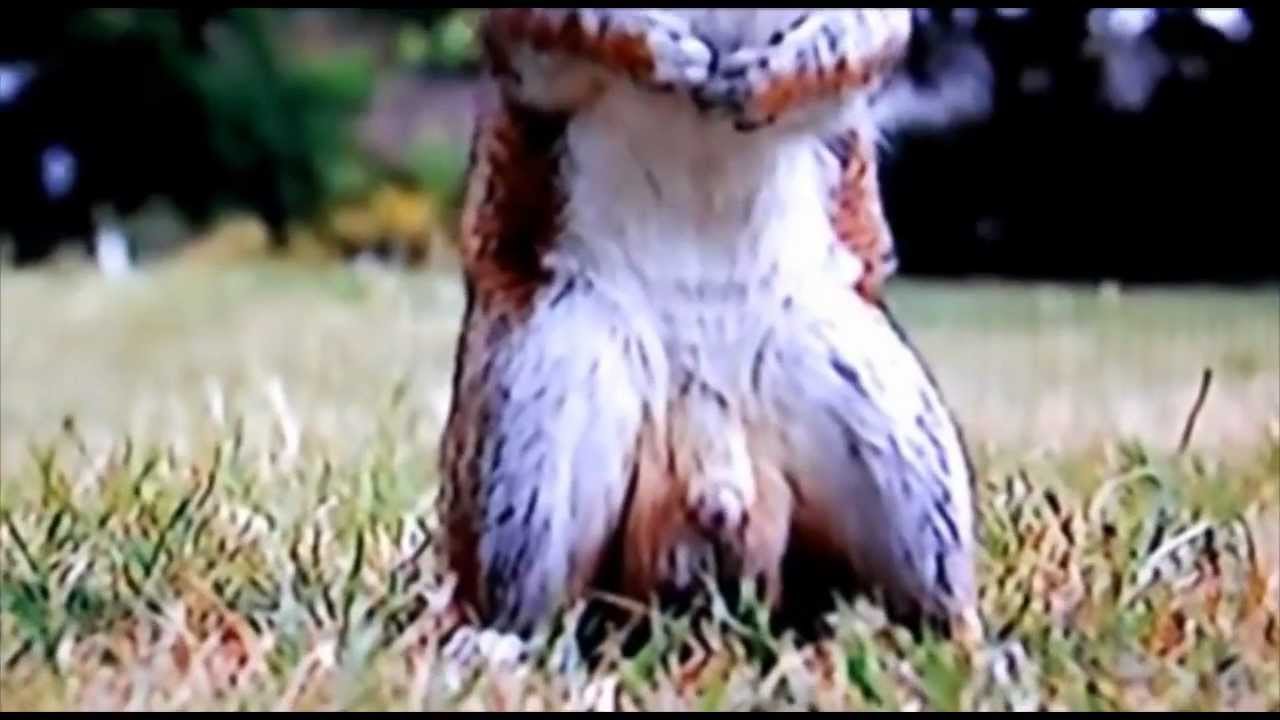Excellent and interesting descriptions and definitions!
Enjoy!
ARCHETYPES
Though it sounds like a big, fancy word, an "archetype" is something we all experience and know intimately from the inside.
Archetypes are living entities, psychological instincts or informational fields of influence that pattern human perception and experience.
Psychic organs of the pre-rational psyche, archetypes are the invisible, form-less "ground plan" which in-form and give shape to both individual and collective human behavior.
Called by Jung "typical modes of apprehension," an archetype is like the underlying grid-line or blue print which informs and structures how we perceive, interpret and respond to our experience.
The determining power underlying both individual and mass psychology, the archetypes of the collective unconscious are the formative templates that give breath (inspire) and depth (materiality) to events in both the inner and outer worlds.
Indefinable, the archetypes are the eternally inherited possibilities of ideas which initially have no specific content.
They are the psychic skeleton upon which the individual and collective body politic is formed.
Archetypes are the structural forms that underlie consciousness, just as the crystal lattice underlies the crystallization process.
Archetypes, like the crystal lattice, are empty of concrete, material existence, yet they shape consciousness and events in the world just like the crystal lattice patterns the form of the individual crystal.
Just like the smallest particles in physics, the
archetypes themselves are non-perceptible and irrepresentable, yet are experienced through their effects in the world.
The archetypes precede all representation, while simultaneously re-presenting themselves through in-forming and giving shape to the perceptible universe.
Jung writes,
"The archetypes are therefore exceedingly important things with a powerful effect, meriting out closest attention."
The complexes are the inner, psychological vehicles that flesh out the rich repository of contents of the underlying archetypes, giving the formless archetypes a specifically human face.
Archetypes are of a "transcendental" nature, meaning
they exist in a realm outside of space and time.
Archetypes
nonlocally exert their in-forming influence through the frictionless and super-fluid medium of the collective unconscious itself.
They irrupt, unfold and bleed into, over and through linear time so as to incarnate and reveal themselves.
Archetypes become visible by arranging and magnetically attracting events into their field-of-force so as to give shape to themselves.
Archetypes are atemporal, self-organizing fields, which is to say that they organize, in-form and give shape to both the outer and inner dimensions, the world and our experience.
Archetypes nonlocally configure events in the outer world so as to synchronistically express what is going on inside of us, as well as vice versa.
When the archetypal dimension is emerging, the boundary between the inner and the outer begins to dissolve, as the inner experience of the archetype becomes synchronistically enacted in the outer world.
The destructive world events that have played out from time immemorial are the effects of an archetype getting constellated and being unconsciously acted out as human history.
The archetype is continually creating novel iterations of the exact same underlying invariant process, which is to say "itself," like an eternally self-generating fractal unfolding over linear, historical time.
The archetypal dimension is continually unveiling and revealing itself to us as it actualizes and materializes itself on the stage of history.
Until the archetype is consciously recognized and related to, however, instead of unconsciously acted out,
we are doomed to endlessly and compulsively re-create its negative, destructive aspect as if having a recurring nightmare.
NONLOCALITY
When something is said to be nonlocal, it is not bound or localized to one particular place or time, but on the contrary, transcends the conventional, third-dimensional rules of space and time.
Nonlocal interaction is characterized by
instant informational exchange, where one part of the universe, in no-time whatsoever (i.e., outside of time), appears to interact, affect and communicate with another part of the universe in an immediate and unmediated way.
Imagine, in baseball terminology, a throw from deep centerfield to home plate, only the outfielder is halfway around the planet, and the throw takes zero seconds to arrive.
The interaction involved in a nonlocal universe is not any known form of interaction we are familiar with, as it occurs infinitely faster than the speed of light can travel through the medium of space, while at the same time doesn’t involve any expenditure of energy.
Nonlocality’s action-at-a-distance is an expression of an underlying and out-flowing information-filled field which connects and inextricably links every part of the universe with every other part in no time.
In a nonlocal universe such as ours, no part of the universe is or can be fundamentally separate from any other part, which is to say that nonlocality is an expression of the indivisible wholeness of the universe.
This linking, according to the quantum theoretician
Henry Stapp, could be the "most profound discovery in all of science."
COMPLEXES
Thematically organized (such as the power-complex, savior-complex, mother-complex, inferiority complex, etc.), the complexes are the vehicles that flesh out the rich repository of contents of the underlying archetypes, giving the formless archetypes a specifically human face.
Having complexes is not pathological, as everyone has them.
What is pathological, however, is
thinking we don’t have complexes.
Jung clarifies,
"Everyone knows nowadays that people ‘have complexes.’ What is not so well known, though far more important theoretically, is that complexes can have us."
We don’t need to get rid of our complexes, rather,
we need to become consciously aware of them.
What is important is what we do with our complexes.
Complexes are the psychic agencies which flavor and determine our psychological view of the world.
To quote Jung,
"The
via regia [royal road] to the unconscious, however, is not the dream… but the complex, which is the author of dreams and of symptoms."
Complexes are the living elemental units of the psyche, acting like the focal or nodal points of psychic life, in which the energy charge of the various archetypes of the collective unconscious are concentrated.
An emotionally-charged complex acts like the epicenter of a magnetic field, attracting and potentially assimilating everything that has any resonance, relevance or is related to itself in any way into itself.
This inner process can be seen as it en-acts itself in the outer world when we come in contact with someone who has an activated complex and we find ourselves drafted into their process, picking up a role in their psyche.
This is an outer reflection of how a complex can attract, co-opt and subsume other parts of the environment, both inner and outer, into itself.
Complexes, when split-off from consciousness, develop a seeming independent, autonomous will and quasi-life of their own (called autonomous complexes), which can potentially engulf and possess the total personality.
AUTONOMOUS COMPLEXES
"Autonomous complexes" are parts of the psyche which have split-off due to shock, trauma, or breach of our boundaries, and have developed a seemingly autonomous life and apparently independent will of their own.
Though we are unconsciously identified with them, autonomous complexes are subjectively experienced as other than ourselves.
Besides their inherent obscurity and strangeness, our unconscious identification with autonomous complexes is the essential reason why it is so hard to get a handle on them.
Autonomous complexes act upon us, feel like our most intimate self, eventually need to be owned, but paradoxically, don’t belong to us.
The seeming autonomy of the archetypes and complexes is what gives rise to the idea of supernatural beings.
Endowed with a numinous energy,
autonomous complexes are what our ancestors used to call "demons."
Autonomous complexes are a psychological name for the demons in the archetypal process of addiction that animate us to compulsively act out our addictive behavior.
A demon or autonomous complex, to quote Jung,
"behaves like an animated foreign body in the sphere of consciousness. The complex can usually be suppressed, with an effort of will, but not argued out of existence, and at the first suitable opportunity it reappears in all its original strength."
Due to their lack of association with the conscious ego, autonomous complexes are archetypically not open to being influenced, educated, nor corrected by "reality."
An intruder from the unconscious and a disturber of the peace, an autonomous complex, Jung points out,
"behaves exactly like
a goblin that is always eluding our grasp."
If left un-reflected upon, these demons or autonomous complexes wreak havoc for everyone within their sphere of influence.
Jung writes,
"…any autonomous complex not subject to the conscious will exerts a possessive effect on consciousness proportional to its strength and limits the latter’s freedom."
As it takes over and becomes in charge of a person, a complex incorporates a seemingly autonomous regime within the greater body politic of the psyche.
Writing about autonomous complexes, Jung says,
"…the complex forms something like a shadow government of the ego," in that the autonomous complex dictates to the ego.
When we are taken over by and in internal conflict with and because of an autonomous complex, it is as if we, as natural rulers of our own psychic landscape, have been deposed, and are living in an occupied country.
We are allowed our seeming freedom as long as it doesn’t threaten the sovereignty and dominance of the ruling power.
Jung comments,
"…a man does not notice it when he is governed by a demon; he puts all his skill and cunning at the service of his unconscious master, thereby heightening its power a thousandfold."
Being
nonlocal, this inner, psychological situation can manifest both within our psyche and out in the world at the same time.
Demons or
autonomous complexes can be likened to the rabies virus, which travels to the part of a person’s brain controlling the whole person.
It causes them to reject water, for example, so that the virus cannot be spit out of the mouth.
The rabies virus ultimately controls and enslaves its victims, taking away their creativity, spontaneity and mental freedom, as it forces them compulsively, like a vampire, to further the propagation of the virus.
Commandeering and colonizing our psyche, a split-off, autonomous complex is, potentially, like a "vampiric virus," in that it is fundamentally "dead" matter; it is only in a living being that it acquires a quasi-life.
Just like a vampire re-vitalizes itself by sucking our life-force, when we unconsciously identify with an activated autonomous complex, we are literally animating the undead.
Complicit in our own victimization, we then unwittingly give away our freedom, power, and life-force in the process.
Like cancer cells ravaging the body, an autonomous complex propagates itself within the psyche, consuming, devouring, and cannibalizing the healthy aspects of the psyche.
Compelling one-sidedness, autonomous complexes draw and attract all of the wholesome parts of the psyche into itself, warping and destroying the psyche of the person (or nation) so afflicted, infecting the surrounding field in the process.
An autonomous complex can’t stand to be seen, however, in much the same way that a vampire detests the light.
A
demon or
autonomous complex will shape-shift and do everything in its power to resist being illumined, for once it is seen, its autonomy and omnipotence are taken away.
Anchored and connected to consciousness, the
demon or
autonomous complex can then no longer vaporize back into the unconscious, which is to say it is no longer able to possess us from behind and beneath
our conscious awareness so as to compel us to unwittingly act it out and do its bidding.
INFLATION
Inflation is when the ego unconsciously identifies with the archetype of the Self (the wholeness and totality of our being).
Inflation is when something small (the ego), instead of being in conscious relation to something larger than itself (the Self), has arrogated to itself its qualities.
As a result,
the ego is blown up beyond its proper human limits.
In unconsciously identifying with the archetype, the ego appropriates it power, while simultaneously forfeiting its humanity, which is to truly "miss the mark."
Inflated personalities are filled with hubris, becoming "full of themselves," a legend in their own mind, feeling they are not bound by the laws of the third-dimensional universe.
Being caught up in an inflation is like being sucked up by a cyclone, as there is literally no getting through to the person who is inflated, who has been taken over and lifted off the ground by a more powerful energy.
Jung pointed out that,
"Inflation magnifies the blind spot of the eye… A clear symptom of this is our growing disinclination to take note of the reactions of the environment and pay heed to them."
When we are inflated, we don’t accept any reflection, feedback or in-forming influence from the outer universe that contradicts our puffed up image of ourselves.
Instead of being open, receptive, in relationship with and learning from the outer world, when we are inflated we continually interpret everything so as to support our delusional, grandiose self-image.
We see the world through the filter of our own narcissistically self-serving image, which is a form of psychic blindness.
Speaking about an inflated consciousness, Jung says that it,
"…is incapable of learning from the past, incapable of understanding contemporary events, and incapable of drawing right conclusions about the future. It is hypnotized by itself and therefore cannot be argued with. It inevitably dooms itself to calamities that must strike it [and others within its sphere of influence] dead."
Just as the unconscious always compensates a one-sidedness, inflation inevitably results in all of the air (life, breath, spirit) being taken out of the person who is inflated.
Inflation is ultimately self-destructive, and if not consciously reflected upon, always results in disaster.
Talking about inflation, Jung said that it,
"…can be damped down only by the most terrible catastrophe to civilization, another deluge let loose by the gods upon inhospitable humanity."
PRIMA MATERIA
The "famous secret," and the basis of the alchemical opus is the unique
prima materia, which is the chaos and raw material out of which the refined substance or "gold," which is the enlightened mind, is revealed.
The elusive
prima materia needs to be found before the magnum opus, the great work of alchemy, could begin.
Psychologically speaking, the mysterious
prima materia re-presents, and is to be discovered in, the parts of the psyche that we deny, dis-own and marginalize, the aspects of ourselves that we feel ashamed of, and turn away from in revulsion and disgust.
Our neurosis and our wounds are the alchemical "
prima materia," the rejected and despised part of the psyche, the raw material which we should learn to be thankful for, without which we would be unable to make the alchemical gold.
This is related to how the figure of
Christ, the archetypal incarnation of the
Messiah who is the symbol of the True Self, unless recognized for his divinity, was an object of scorn and contempt.
"And just as, in Christianity, the Godhead conceals itself in the man of low degree," Jung writes, "so in the ‘philosophy’ [alchemy] it hides in the uncomely stone [i.e., the philosopher’s stone]."
Symbolically, this is the stone "rejected by the builders," which ultimately becomes the cornerstone.
It is an archetypal, universal idea that the highest value is to be found in the lowest, that the blessing is to be found in the curse, and that the wisdom is to be found in ignorance.
To the alchemists, there was a spirit hidden in the darkness of the
prima materia, a divine spark buried in the darkness of matter.
The much-prized
prima materia is the psychic flypaper which catches every imaginable projection buzzing around in the human mind.
Symbolically speaking, the enigmatic
prima materiarepresents the unknown substance within us that carries the projections of the unconscious.
It is the psychic emulsion or medium in which the subconscious contents within us are encoded.
The
prima materia is thus a symbol for the unconscious itself.
The tantalizing
prima materia has a dangerous, toxic aspect, however, and was considered "bedeviled," causing insanity if not approached with the highest regard.
The
prima materia in its lead-like aspect contains the spirit of depression, a downward movement into the depths of our being which is felt as melancholia, and which corresponds to the encounter with the shadow in psychology.
The
prima materia is often symbolized as an old man, as it is related to the figure of Saturn/Chronos, the archetypal negative father, who is a binding and limiting power that is related to the element "lead.”
Saturn/Chronos’s peculiar form of "blessing" - restraining us as it seemingly takes away our freedom - is always "cursed" by its recipient, and yet, is the very thing which inspires us to discover our own power and authority.
Though potentially deadly, the
prima materia contains within itself its own medicine, which is to say that the alchemical process is its own solution.
The
prima materia is a quantum phenomenon, in that it is of an indeterminate nature of open-ended potentiality, and contains within itself both the poison and the medicine.
The more virulent the poison, the more powerful are its potential healing qualities.
In its original form, the paradoxical
prima materia contains the most incompatible possible opposites inherent in the human psyche within itself in uncombined form.
An eruption of the unconscious,
the prima materia is often symbolized as a dragon, as it is the personification of the instinctual psyche.
The
prima materia is an "increatum," an "uncreated," autonomous, self-generating, spirit-like entity which is the root of itself and rooted in itself and is dependent on nothing.
The ungraspable
prima materia is considered to be the virginal mother which gives birth to the lapis, the philosophers stone, which is the enlightened mind.
The
prima materia is also considered to be an orphan because it is so completely unique and utterly one of a kind.
It is seemingly hard to find because it is found everywhere.
To quote an ancient alchemist, the
prima materia is the Subject of the,
"Great Stone of the Philosophers, which the whole World has before its eyes yet knows not."
Jung contemplates,
"Yet nobody has ever known what this primal matter is. The alchemists did not know, and nobody has found out what was really meant by it, because it is a substance in the unconscious which is needed for the incarnation of the god."
THE HERMETIC VESSEL
One of the key conditions needed for the success of the alchemical art is a closed and air-tight hermetic vessel, or "container," which is able to withstand the pressure needed for the transformation and "cooking" of the
prima materia.
Speaking of the profundity of the alchemical vase, the legendary writer of antiquity
Maria Prophetissa says that,
"the whole secret lies in knowing about the Hermetic vessel."
A vessel of and for the spirit, the alchemical container is no mere physical apparatus, but rather is a mystical idea, a primal image, a genuine symbol expressing something of real value within the very psyche that produced it.
The concept and experience of the hermetic vessel develops and emerges out of the unconscious itself as a result of contemplating and thus shedding light on the unconscious.
In a mysterious way, the alchemical vase is identical with its contents.
The psyche itself IS the mystical hermetic vessel, in that the psyche catalyzes the transformation of the
prima materia, is itself the
prima materia which is being transformed, and it also is the container in which the transmutation occurs, as well as being the philosophers’ stone that is born out of the work.
Feminine in nature, the spacious hermetic vessel is a receptive uterus and matrix of spiritual renewal and rebirth.
Jung writes that as the psyche of humanity becomes conscious,
"It becomes the divine cradle, the womb, the sacred vase in which the deity itself will be locked in, carried and born."
The hermetic vessel is the expression of the feminine, whose intrinsic and invulnerable power is its spacious nature, which is able to hold space so as to give birth in and to form.
The life-giving alchemical container typically is portrayed as having a purifying fire underneath it, symbolizing the heat of introspective, contemplative awareness, which is needed to create sufficient psychological pressure for transformation.
If there’s not enough pressure, no transformation takes place. In alchemy, the fire purifies, while simultaneously melting and synthesizing the opposites into a unity.
Jung points out that,
"attention warmed the unconscious and activated it, thereby breaking down the barriers that separate it from consciousness,"
...allowing its contents to pass between the conscious and unconscious more easily.
The alchemists used images of the gentle warmth of a brooding hen incubating her eggs and the baking of bread to symbolize this process.
The first was an image of the heat from nature, the second was an image of humanity’s ability to alter nature through the heat of awareness.
Jung elaborates,
"’Heating’ is necessary; that is, there must be an
intensification of consciousness in order that light may be kindled in the dwelling place of the true self."
For the alchemical "work" to be successful, the "heat" generated by the mutual co-operation and cross-fertilization of nature (both terrestrial and celestial), and human art was essential.
A "hermetically-sealed" vessel (sealed with the stamp of
Hermes, who is related to
Mercurius, the two-faced God-image of the alchemists), symbolically speaking, prevents anything extraneous from entering into the operation, as well as stopping un-reflected-upon projections from leaking out into the world.
In addition, a hermetically sealed container keeps the flask from "blowing its lid," which would be symbolic of not being able to "contain" the creative tension and pressure.
"Blowing our top" is to become possessed by, and thereby compelled to unconsciously act out primitive, un-integrated, archetypal affects of overwhelming emotion and passion.
The alchemical vessel is symbolic of the importance of the psychic comprehension of the Self.
We, through our consciousness or lack thereof, play the key role in the creation of the mystical vessel, and hence, ourselves.
The multi-dimensional vessel, envisioned as a material substance, symbolizes the realization of divinity reaching down into and transforming matter.
Each individual human being is the Holy Grail-like vessel in which God comes to consciousness.
We are living, breathing alchemical vessels in flesh and blood, receptacles created and prepared by God for Its transformation and Incarnation.
Jung talks about,
"…man being the retort in which the god is transformed, where he descends into uttermost matter and where the spirit develops out of matter again, carrying with itself all the degrees of existence."
ACTIVE IMAGINATION
When the alchemists speak of "meditatio" and "imaginatio" (meditation and imagination), they mean, as Jung explains,
"…an inner dialogue and hence a living relationship to the answering voice of the ‘other’ in ourselves, i.e., of the unconscious."
Jung called this dialogue with the other within ourselves, between the conscious and the unconscious, "active imagination."
The psychological process of active imagination is the equivalent of the symbolic operations of alchemy.
Instead of passively watching the manifestations of the unconscious, in active imagination we fully engage with and actively participate in a conscious relationship with our unconscious.
In active imagination we find ourselves being asked to creatively respond and come to terms with the voice of the "other" within ourselves.
When an unconscious content is about to become conscious, it first becomes partially conscious, like something that is translucent - simultaneously visible and invisible.
In active imagination, we enter into a creative dialogue with these unconscious contents, facilitating their passage from an unconscious, potential state to a conscious, actual one.
Active imagination is the most powerful technique Jung ever encountered
for bridging this gap and metabolizing, digesting and assimilating the contents of the unconscious and hence, becoming conscious.
When we are unconsciously identified with the contents of our unconscious, we cannot see these contents, as being identical with them, we have not separated ourselves from these contents so as to be able to see them as objects.
These unconscious contents are still too much a part of our frame of reference through which we interpret our experience for us to examine them with any objectivity.
Before we can integrate a content of the unconscious, we must distinguish ourselves from it.
In active imagination, we "objectify" the contents of our unconscious by creatively giving them shape and form, thereby making them into an object that we, as subject, are separate from, and with whom we have an interactive relationship and dialogue.
Jung comments,
"The essential thing is to differentiate oneself from these unconscious contents by personifying them, and at the same time to bring them into relationship with consciousness. That is the technique for stripping them of their power."
Personifying and entering into conscious relationship with the figures of our unconscious as if they are autonomous, independent living entities takes away their compelling power over us.
Any constellated, unconscious content which we are not in relationship with possesses us from behind and beneath our conscious awareness.
When we are unconscious of something that is activated within us, we are identified with it and are compelled to act it out unconsciously in our life.
When we are unconscious of something that is kindled within us, Jung writes,
"it moves us or activates us as if we were marionettes. We can only escape that effect by making it conscious and objectifying it, putting it outside of ourselves, taking it out of the unconscious."
When fully objectified, we not only take away the unconscious content’s power over us, but we are able to access and unite with the power which animates it in a way which empowers ourselves.
By objectifying these inner figures, we dis-identify from them and give a body and voice to these seemingly autonomous, disembodied and dismembered parts of ourselves who appear to have a mind of their own and simply need translation into the third-dimensional, spatio-temporal medium of matter.
It is not hard to objectify the contents of the unconscious, as being autonomous, they seemingly possess an identity all their own, so they naturally have a tendency to spontaneously personify themselves within our psyche.
Contemplating the archetypal paradox of how the solution is encoded in the seeming problem, Jung continues,
"Their autonomy is a most uncomfortable thing to reconcile oneself to, and yet the very fact that the unconscious presents itself in that way gives us the best means of handling it."
This "best means" is the process of active imagination.
Speaking about his own personal experience, Jung writes in his autobiography that it was actually animated figures within his imagination that,
"…brought home to me the crucial insight that there are things in the psyche which I do not produce, but which produce themselves and have their own life."
Seemingly living, autonomous figures existing inside of Jung’s imagination, figures whom Jung subjectively experienced as other than himself, revealed and literally taught Jung to recognize the autonomous nature of the psyche.
Speaking about one such inner figure, Jung comments,
"In my fantasies, I held conversations with him, and he said things which I had not consciously thought. For I observed clearly that it was he who spoke, not I."
Jung was "hearing voices," which in his case as well as in many others, was not a pathological phenomenon, but an illumination (thank God for all of us that he didn’t get "medicated" out of his illumination by psychiatry).
These inner figures helped Jung understand "that there is something in me which can say things that I do not know."
There is a figure in us who knows us better than we know ourselves.
Objectifying the contents of the unconscious is to discover and step into the perspective that we are a subject with a viewpoint other than that held by the now objectified contents.
Relating to the contents of our unconscious as if they are other than ourselves is at the same time to relate to ourselves as other than these contents.
In objectifying contents of our unconscious, we are simultaneously dis-identifying from them and creating ourselves distinct from and relative to these contents.
As Jung points out,
"In the final analysis the decisive factor is always consciousness, which can understand the manifestations of the unconscious and take up a position toward them."
Paradoxically, recognizing these contents as other than ourselves is the very act that helps us to eventually own, embrace and integrate these unconscious contents as ultimately parts of ourselves.
THE LION’S GAZE
One of the most beautiful teachings in Buddhism is called "The Lion’s Gaze."
The following example is given as an illustration:
when we throw a stick around a dog, the dog runs after the stick, but when we throw a stick around a lion, the lion runs after us.
The
throwing of the stick in this example represents when an uncomfortable, afflictive emotion inside of us gets triggered.
When we are triggered, it is as if a button inside of us has been pushed which activates an unconscious, compulsive knee-jerk reflex.
Running after the stick like the dog, which is to indulge in and "act out" being triggered, is to put our attention outside of ourselves.
This is to relate to what is triggering us in the outside world as "the problem."
From this point of view, if only what was triggering us in the outside world would stop, we would feel better and the problem would be solved.
Having the gaze of the lion, however, if we become triggered by something, we turn our gaze within ourselves and self-reflect, looking at whatever it is within us that has gotten activated.
The lion is not afraid to go right to the source of the trigger, which is never outside, but always within ourselves.
Assuming the fearless gaze of the lion, we relate to the situation that has triggered us as a gift, as it has helped us access a part of ourselves that up until now has been unconscious, and hence hidden.
THE ARCHETYPE OF THE NEGATIVE FATHER
Symbolically speaking, the
prima materia, the very stuff which needs to be transformed in the alchemical opus, corresponds to lead, which relates to Saturn-Chronos, the negative father.
One of the
prima materia’s many symbols is a weak and infirm old man, the mythic dying king, or "senex.”
This figure of the negative father has (arche)typically lost touch with feeling, with eros, with relatedness, with creativity, with the heart, with compassion, and with love.
The archetypal, negative patriarchy has to do with the suppression of the feminine, of spontaneity, of life itself.
The negative father is dissociated from mother nature and the environment, which it objectifies and tries to dominate, instead of being in relationship with. This figure of the rigid-old-man-negative-father is symbolic of a calcification of consciousness which, out of fear of its own weakness, holds onto and becomes addicted to power and control, dictating to all who fall under its dominion.
The archetype of the negative father has to do with dominating and using force ("might makes right") over others, as compared to being in a reciprocal, dialectical relationship.
The dying old man symbolically represents a dominant position in consciousness which has outlived its usefulness, and thus becomes an obstacle to the growth and development of consciousness.
This archetypal figure of the negative father is in need of being liquefied and de-solidified, of being given an alchemical bath in the healing waters of the psyche.
To be under the spell of Saturn-Chronos, the dark father, "Father Time," is to be entranced and absorbed in linear, "chrono-logical" time at the expense of the timeless, "syn-chronic" dimension of our being.
Saturn, the corrupted patriarchy, mythologically speaking, is the governor of the prison, the one who binds us and seemingly limits our freedom, while simultaneously being the supreme tester and great purifier.
Encoded in seemingly hidden form within this archetype is our own intrinsic power, as it challenges us to find and speak our true voice, access and step into our place of empowerment and true authority, and in so doing potentially connect with the intrinsic wholeness of the Self.
Due to its initiatory aspect, the archetype of the negative father is an unmediated expression of the Self, but in its darker aspect.
THE DREAMING
I refer to this process of how projections constellate counter-projections as "the dreaming.”
The dreaming is the shared, interactive space between us which in-forms us.
The dreaming is the deeper, underlying dynamic which shapes our reactions and configures our relation to each other.
I am dreaming you up, but you are dreaming me up to dream you up, ad infinitum and vice versa at the same time.
The dreaming is the space between us in which our relationship happens.
The dreaming is a whole, self-perfected, and self-contained universe, a living entity, a mutually shared dream that is clothing itself in our form as it reveals itself in ever new guises.
The dreaming takes "two to tango," so to speak, in that it is created by being in relationship with each other.
We have conjured up the dreaming through our collaborative interaction, and there is a way of "following the dreaming" that can awaken us to a deeper level of freedom and healing.
SHADOW PROJECTION
Shadow projection, or
scapegoating, is when we split off from our own darkness and project it outside of ourselves.
When we project our shadow onto someone else, we believe that the other person is the embodiment of the darkness that ultimately belongs to ourselves.
We then want to fight and destroy the evil we see "out there," as it reminds us of something dark within ourselves that we’d rather have nothing to do with.
By trying to destroy the evil we see in the outer world, however,
we become possessed by and incarnate the very evil we are trying to destroy.
Shadow projection is a reflection of the inner process of dissociating from and wanting to get rid of - exterminate - a part of ourselves.
Shadow projection is a self-mutilation that is actually an act of psychic violence, not only on ourselves, but on the "other" who is the recipient of our projection.
Shadow projection doesn’t happen in a void, however, as the universe simultaneously calls forth the projection.
When someone is unconscious of their shadow, they will literally attract others’ shadow projections onto themselves, as if they have become, in Jung’s words, "psychic flypaper."
Their unconsciousness of their shadow ensures that they will unconsciously act it out, which offers a "hook" on which others can "hang" their shadow projection.
The recipient’s hook perfectly draws out the other’s unconscious shadow projection, which had a potentiality for becoming conscious, and hence, used the indirect and circuitous method of projection onto an outer object so as to express itself in some way.
Shadow projection is itself the unmediated expression, revelation and playing out of the shadow.
Projecting our own evil outside of ourselves seemingly relieves us of the burden of having to deal with the evil within us.
And yet, projecting the shadow, by avoiding dealing with the evil inside of ourselves, is the primal act which generates the very "evil" that we are attempting to avoid in the first place.
Jung simply calls shadow projection "the lie," which by association is related to the symbolic figure of the Devil, one of whose meanings is "the liar."
Shadow projection is the underlying psychological process which, when collectively mobilized, is the high-octane fuel which feeds the human activity of war.
Trying to kill our shadow as it appears in the outer world is itself the embodied reflection of our original inner act of splitting off from, projecting out and trying to destroy the dark part of ourselves, which is the impulse at the very root of shadow projection in the first place.
In other words, our present-moment "inner" activity of projecting the shadow "outside" of ourselves is being dreamed up and played out in the seemingly "external" world.
The outer world is the canvas upon which our inner process em-bodies, or incarnates itself.
We are literally acting out on the world stage our very inner process of disassociating from, projecting out, and trying to destroy our own darkness.
In trying to destroy our own shadow, we find ourselves in an endless conflict with no "exit strategy" that, moment to moment, we ourselves are unknowingly feeding, supporting and creating.
Once we collectively shadow project, just like in a dream, the seemingly outer universe will reflect back our projected shadow in the form of others who will play out and thereby justify our projection by supplying all the evidence we need to confirm the apparent truth of our shadow projection.
When a group (or a nation) co-operatively project the shadow onto an agreed upon enemy, we literally "dream up" the universe to incarnate the very shadow we are collectively throwing outside of ourselves, which continually justifies our initial act of shadow projecting in a self-generating feedback loop.
In shadow projecting, we become bewitched by our own reflected and dis-owned shadow, thinking it exists objectively, separate from ourselves.
When we are shadow projecting, we are truly mad, as we have fallen into a self-perpetuating feedback loop in which we are trying to destroy our own darkness, a battle that can never be won.
It is like trying to extinguish a fire by pouring gasoline on it.
Collective shadow projection is both a symptom of madness, while simultaneously being the very act which generates the madness of which it itself is an expression.
THE DAEMONIC
To quote noted psychologist
Rollo May,
the "daemonic" is "any natural function which has the power to take over the whole person [or group/nation]… the daemonic can be either creative or destructive [i.e., "demonic"]… violence is the daemonic gone awry… ages [such as ours] tend to be times when the daemonic is expressed in its most destructive form."
The daemonic is not an objectively existing metaphysical entity in the Christian sense, but is an archetypal function of human experience, a psychic as well as an existential reality in which we all participate.
The daemonic is a quantum phenomenon, in that it contains both the light and dark aspects of our being encoded within it in a superposed state, which is to say that hidden within the daemonic is the creative seeds of its own transformation.
Both constructive and destructive forces are fully present in the daemonic simultaneously, and either energy can potentially manifest, depending upon how an observing consciousness interacts with it.
Being an archetypal energy
that can take over and possess a person or a species, the daemonic announces itself by drafting people into its service, enlisting human beings as instruments of its full-bodied revelation of itself.
People so possessed will be compelled to unconsciously act out so as to give shape and living form to this archetypal, daemonic energy in the third dimension.
Jung comments,
"Generally speaking the daemonic is that moment when an unconscious content of seemingly overwhelming power appears on the threshold of consciousness. It can cross this threshold and seize hold of the personality. Then it is possession."
Before a transpersonal archetype such as the daemonic can be consciously integrated, it will always manifest itself physically, because, in Jung’s words,
"…it forces the subject into its own form."
If the daemonic is not honored and
treated religiously (i.e., carefully considered with reverence and a sense of the sacred), however, it constellates negatively and turns truly "demonic," in the destructive sense of the word.
Hidden in the daemonic, however, is
our inner voice, our guiding spirit, our angel, and our genius, what is referred to as our "daemon."
Jung writes that,
"…the daemon of the inner voice is at once our greatest danger and an indispensable help."
Encoded within the daemonic is our own creative potency, which if distorted, misused, or unexpressed becomes self-destructive.
Jung refers to the daemonic as the "not yet realized creative," which is to say it is creativity not yet "made real" or actualized by the ego.
Developing a healthy and strong ego is crucially important in entering into relationship with and creatively expressing the daemonic energies within us.
One of the most destructive things in the human psyche is
unrealized creativity.
The word daemonic is related by association to the figure of "the devil," which in turn is related to the word "diabolic," whose inner meaning is to divide, separate, and disintegrate.
Being divisive, the diabolic splits us into multiple fragmented and compartmentalized pieces, both within ourselves and in our relationship to others.
The antonym of
diabolic is the word "symbolic," which, in addition to being the language of dreams, means to unite, bring together and integrate.
To the extent we are in touch with the symbolic dimension of our experience, which recognizes the dreamlike aspect of our existence, is the extent to which we are able to transmute and liberate the daemonic into creativity.
One of the main ways that the destructive aspect of the daemonic becomes empowered within us is
when we are unconscious of our shadow.
In addition to bringing awareness to our darker half, the greatest protection against the negative aspect of the daemonic is to be in touch with our intrinsic wholeness, which is to be "self-possessed," - in possession of the part of ourselves that is not possess-able, which is the Self, the wholeness of our being.
FINDING THE NAME
It is to our great advantage to expand our psycho-spiritual fluency so as to enable us to navigate the living waters of our inner landscape of the psyche.
For example, when we "see" a demon (to understand what a demon is, psychologically speaking, please see both "the daemonic" and "autonomous complexes"), we know its name, which helps us to get a "handle" on it.
Jung says,
"For mankind it was always like a deliverance from a nightmare when the new name was found."
Naming is exorcistic, as it dis-spells the demon’s power over us.
This is the power of
the Logos, of
the Word.
Like it says in the Bible,
"In the beginning was the Word, and the Word was with God, and the Word was God."
(John 1:1).
When we find the name of a demon, we take away its omnipotence and autonomy, as it can no longer take us over through our unconscious blind spots and compel us to unwittingly act it out.
Finding the name empowers us to creatively engage with these darker parts of ourselves that are emerging from the shadows "in the name of healing."
Jung says that,
"The act of naming is, like baptism, extremely important as regards the creation of personality, for a magical power has been attributed to the name since time immemorial. To know the secret name of a person [or a demon] is to have power over him."
Finding the name is a creative act, an act of power which has the power to change our relationship to the archetypal powers of the universe.
Jung comments,
"The moment you can designate the lived archetype by its symbol, you feel relieved, that is a good and positive moment even if it is horrible… Therefore old Egyptian medicine consisted in giving the thing the right name…
A new name always produces an extraordinary effect; we cannot rationalize these things, they cast a spell, they are symbols, they really do influence the unconscious as the unconscious influences us."
How do we make a word?
We "spell" it.
In finding the words for our experience, we are casting a "positive spell" whose nonlocal orbit and influence is liberating.
We are then able to consciously language and give voice to our experience, which is to step into and access the creative spirit within ourselves.
In learning new, creative ways to express ourselves, we are dis-spelling the curse we were under of not being able to symbolize our experience.
In learning to consciously spell-cast, the world is no longer written in stone, with us as its passive victims, as we realize and tap into the creative and transformative power of the Word.
MALIGNANT EGOPHRENIA
Skarekrow - Perhaps even more potent and prevalent now with Trump.
(from the Introduction to The Madness of George W. Bush: A Reflection of our Collective Psychosis, p. 5-8)
(
Note - in this excerpt from my book, I introduce the term "malignant egophrenia," a psycho-spiritual dis-ease of the soul that has been with us since time immemorial, is endemic to our culture at large, and symptomatic of the times in which we live.
Because it is a sickness in the soul of all of humanity, it pervades the field and is in all of us in potential at any moment, which makes it especially hard to diagnose.
In this excerpt, I am sharing how I first encountered a human embodiment and carrier of this illness of the soul in my relationship with my father.
Malignant egophrenia can only be understood when we step out of the separate self and see the deeper unified field which connects us and of which we are an expression.
My father was playing out in full-bodied form a darker, mythic role that ultimately exists not only inside of my personal psyche, but the collective unconscious as well.
In this excerpt, I am pointing out that, though on the surface, what my father and George Bush acted out seemed completely different and unrelated, there was an underlying pathology incarnating itself through both of them that revealed a deeper, archetypal process at work within all of us.
Bush and my father are variations or reiterations of a similar theme, revealing a higher-dimensional psychic virus, the "bug" in the system that has wreaked havoc all throughout human history, and is at the root of our current world crisis).
"The psychic disease that has taken over Bush is a higher-dimensional virus articulating itself non-locally (i.e., not limited by time or space) as a field phenomenon, and it needs to be contemplated as such.
For example, if we don’t recognize the deadly disease infecting the field that Bush has fallen prey to and we support and follow him, then we become the unwitting agents through which this non-local disease propagates itself.
I am calling this illness pervading the field and existing deep within the soul of all of humanity
malignant egophrenia.
Currently, malignant egophrenia is manifesting as a
collective psychosis causing endless destruction on a global scale.
The first step in healing this malevolent pathogen is to see it, objectify it, and name it.
To know the demon’s name is to know its nature, which like kryptonite to Superman, takes away its power over us.
This is the power of the Logos, the Word.
This work comes out of a deep personal tragedy.
Malignant egophrenia, like some sort of deadly, other-worldly virus, incarnated itself through my father and took him over so fully, he never even suspected what was happening.
Like
George Bush, the healthy parts of my father’s psyche were co-opted by the pathological aspect, which drafted these parts into its service.
Very bright, and on the surface apparently very loving, my father, like George Bush, could appear to be a regular, normal guy.
This made the malady he was stricken with difficult to recognize.
Because my father was so taken over by it, he became an embodiment and carrier of malignant egophrenia, becoming a portal through which the field around him "warped" in such a way so as to feed and support his pathogenic process.
Just as with George Bush, a non-local field of denial and cover-up that resisted the light of consciousness was conjured up around my father so as to protect him.
This is (arche)typical of how family systems configure themselves around a situation of abuse.
The one and only time in my life any family member talked to me honestly about my father’s pathology was a phone conversation I had with my Aunt Helen, my father’s only sibling.
She shared with me that she thought that the root of my father’s problem was the overwhelming guilt he must have unconsciously felt over, in her words "the horrible, terrible thing" he did when he was younger.
What he did was "so horrible and so terrible that she would never, ever tell me what it was," however.
She said their parents died broken-hearted because of this "horrible, terrible thing" my father did.
As soon as she finished telling me this, Aunt Helen snapped back into her habitual role of telling me that the problem I had with my father was because I was sick, as if it was too much for her to stand in the truth of what she had just shared.
Aunt Helen died a month after my father did, taking the family secret to the grave with her.
My father was unable and unwilling to experience his sense of guilt, shame, or sin for whatever this "horrible, terrible thing" was.
His unwillingness to experience his own darkness led to a process of lying, hiding, and covering up in which my father came to believe his own lies.
He resisted self-reflection at all costs, falling into a completely dissociated state of denying his own denial and hiding from himself.
He then became attached, and addicted to his role of power over others, as this ensured he would never have to be vulnerable.
Other people in his sphere of influence became objects or pawns to feed and support his own inflated, narcissistic, and pathological image of himself. This abuse of power became a self-generating, vicious cycle, which developed an autonomous life of its own.
In other words, this habit of hiding from his own darkness literally took over and "possessed" my father.
He then compulsively acted out and embodied this process by projecting his own shadow outside of himself and trying to destroy it.
By doing this, he became possessed by the very shadow he was trying to destroy, a state of complete and utter madness.
In this state of madness, my father, by abusing his power over others, literally terrorized the field around him.
Like George Bush, this process of shadow projection opened up the door for
malignant egophrenia to incarnate itself through my father and make him one of its instruments (read a more in-depth articulation of malignant egophrenia)."
MALIGNANT NARCISSISM
(Skarekrow - Perhaps this is even more Trump.)
A narcissist is someone who has become hypnotized and entranced by their own inflated self-image.
They have become so self-absorbed, that not only are they not in genuine relationship with others, but they relate to others (including the environment) as objects to satisfy their own need for self-aggrandizement.
A "malignant" narcissist, however, is a narcissist who reacts sadistically to others who don’t support and enable their narcissism.
Ultimately, a malignant narcissist wants to annihilate anyone who in any way threatens their illusory self-image and self-serving agenda.
Malignant narcissists can be very charismatic, and are very adept at charming and manipulating others.
They are clever at camouflaging their malevolent agenda, even to themselves.
Malignant narcissists can appear to be very normal, regular, and seemingly loving people.
Many of these so-called seemingly "
normal" psychopaths are drawn to positions of power.
Malignant narcissists are very skilled at entrancing others, at putting others under their spell.
They are master hypnotists, like "black magicians," in that they are very talented at manipulating others through their unconscious blind-spots and vulnerabilities.
Malignant narcissists are pathological liars who are very adept at lying, and due to their extreme inner dissociation, then believing their own lies.
They fall into an infinite regression of being in denial about being in denial, which is to say, they are continually hiding from themselves.
The one-sided conviction they carry in their act of self-deception can easily "entrance" people.
A malignant narcissist plays on people’s fears so as to gain their trust and then control them, which is based on the abuse of power over others - the signature of a true dictator, be it in a family or a nation.
At their core, a malignant narcissist’s desire is to dominate and have power over others.
The perverse enjoyment of complete domination over another person(s), which involves transforming a person into an object (a "thing"), in which their freedom is taken away, is the very essence of the sadistic drive.
Their sadism is a way of transforming their feelings of powerlessness and impotence into an experience of omnipotence.
Malignant narcissists can seem confident and self-assured, but are, in reality, covering deep insecurities and fears through an inflated self-image.
Intense feelings of revenge, fury, and rage verging on insanity manifest when their fear is exposed and their narcissism threatened.
This rage is not just a defense against their vulnerability and wound, but comes from a perverse desire to sadistically punish those who they perceive are the cause of their rage.
A malignant narcissist is the incarnation of the separate, alienated self spinning out of control to a pathological degree.
They are unconsciously identified with, and will protect at any cost an imaginary "separate self" that is alien from the rest of the universe.
Paradoxically, at the same time they experience themselves as separate from others, the malignant narcissist lives in a state of "unconscious fusion" with others.
To a malignant narcissist, other people don’t truly exist as autonomous beings, but as disposable pawns to feed and support their narcissistic, masturbatory fantasies.
A malignant narcissist hasn’t developed a sense of their own authentic self, which is why they are unable to be in genuine relationship with others.
Psychologically,
malignant narcissism is a very primitive and un-evolved state, one totally lacking in eros (relatedness).
Malignant narcissists are not conscious of the interconnectedness between themselves and others.
Emotionally underdeveloped, they are unable to feel empathy for others and have an overwhelming lack of genuine compassion.
Malignant narcissists are unable to genuinely mourn, for they are ultimately only concerned with themselves.
They will feign grief, however, just as they will try and appear compassionate, if it is politically correct to do so and, hence, to their advantage, as they are master manipulators.
Like a true bully, malignant narcissists abuse their position of power and privilege simply because they can, which is morally indefensible.
They can endlessly "talk" about taking responsibility, but they never genuinely face up to and become accountable for their actions.
Malignant narcissists play the role of the "victimizer disguised as the victim" so as to absolve themselves of blame.
They perpetrate abuse and violence on others, while hiding behind the façade of being victims themselves.
Malignant narcissists are truly crazy-making to others within their sphere of influence.
Malignant narcissists are unwilling and unable to experience their sense of shame, guilt or sin, as their narcissism doesn’t allow these feelings.
This inability to consciously feel their "negative" feelings is at the root of the dynamic in which they dissociate from their own darkness, blaming and "projecting the shadow" onto some "other."
This splitting off and projecting out their own evil results in always having a potential enemy around every corner, which is why malignant narcissists tend towards paranoia.
Malignant narcissists continually "need" an enemy and will even create new ones to ensure that they don’t have to look at the evil within their own hearts. They react with aversion to the reflection of their own evil,
Malignant narcissists are unconsciously possessed by the power-drive of the archetypal shadow.
Being possessed by an archetypal energy means that they have lost their internal freedom, as a more powerful, transpersonal, archetypal force has so taken them over that it unconsciously and compulsively acts itself out through them.
If left in a position of power, malignant narcissists ultimately destroy themselves and everyone under their dominion.
Malignant narcissists literally poison their field of influence, whether it be with depleted uranium or psychic toxicity, which is just as real and just as deadly.
Malignant narcissists are what are called "necrophiles," in that their impulses are perversely directed against life - the spontaneity of which they are afraid of - and towards death and destruction, which they are secretly attracted to.
Malignant narcissists have a sadistic "willingness to kill" so as to protect their own self-serving delusions, which makes them particularly dangerous, as they will literally stop at nothing to hold onto the position of power in which they find themselves.
War and an atmosphere of violence is the situation in which they feel most themselves.
Malignant narcissists are murderers (whether it be physically or psychically) who are criminally and morally insane.
THE DREAMING UP PROCESS
In a process that happens in, over and outside of time, when two or more people come together, projections activate counter-projections and create a mutually shared dream of relationship.
For example, say I have an unhealed wound in my psyche.
If I go to sleep tonight and dream, my unhealed wound will be sure to show up in my dreams, as my night dreams are a projection or reflection of my inner process.
In a similar way, I will unconsciously connect the dots and give meaning to the inkblot called waking life, so as to dream up into materialization my inner process that needs resolution.
I will unconsciously dream up and attract to myself someone in the outer world with whom to play out my unhealed, inner process.
All it takes is the slightest "hook" in the other upon which I can hang my projection.
The hook is like a piece of velcro where my projection becomes lodged, as it is where the other buys into (and secretly agrees with) my projection.
Even though the part of them that has a resonance with my projection might be 1% of who they are, my attention will tend to focus on this 1% of them as being all of who they are.
Jung comments,
"The moment one forms an idea of a thing and successfully catches one of its aspects, one invariably succumbs to the illusion of having caught the whole."
My focusing on and relating to only one part of the other will amplify this particular quality in them, making it more likely that they will step into and embody this very quality, providing all the evidence I need to prove to myself even more that this is who they actually are, further entrenching me in my viewpoint of seeing them this way, which only serves to further draw this quality out of them, in a self-confirming and self-perpetuating feedback loop which becomes a mutually created self-fulfilling prophecy.
And of course, like a marriage made in heaven (or potentially, hell), in a mirrored template that fits like a lock and a key, the other is reciprocally dreaming me up to play out their unconscious process in a similar way.
In a mutually created, shared dream, we are dreaming each other up to play out roles in each other’s process.
When this mutual dreaming process fully emerges and bodies forth, each person becomes a fully materialized dream character, an incarnation of a living figure inside of the other’s mind.
As if co-creating a shared dream-space to inhabit together, at this point we are as much in the psyche as the psyche is within us.
Something deeper is revealing itself through our synchronistic interplay.
To recognize this in oneself is to become lucid in the waking dream.
When both people involved recognize this and become co-operatively lucid together, they can collaboratively play with and transform
the shared waking dream they are having, which is evolution in action.
This is a reflection in the microcosm, an iteration of a fractal on the small scale of individual relationship, of what is available to us, macrocosmically speaking, as a species.
We are always dreaming others up while at the same time being dreamed up by them.
I imagine we have all experienced, consciously or otherwise, what it feels like to be dreamed up by someone else into their process.
With certain people, we find parts of ourselves that we usually don’t manifest getting drawn out of us, as if the other for some reason needs someone to play this particular role for them.
As we watch and participate in how we get drafted into the other person’s inner process, we discover that
synchronistically, the role we are cast in is not just showing us something about them, but at the same time is revealing a previously unconscious part of ourselves as well.
Delusions of Separation
ADS effectively immobilizes and renders inoperative our ability to self-reflect, as it relates to the world through the fixed and non-negotiable lens of assumptions that the world ‘object-ively’ exists, independent of ourselves.
When we are stricken with ADS, we react to our perceptions and interpretations as if they exist inherently and independently in the object (the world), instead of realizing they are automatic reflex-ions (of the way we are looking) and are thus always revealing the subject (ourselves).
In an unconscious ‘reflex,’ we then try to ‘attack’ the problem from the wrong point of view (externally), instead of approaching its source, which is within ourselves (please see "
The Lion’s Gaze").
ADS is a ‘semantic syndrome’ in which we are mis-interpreting the nature of our experience, subtly but significantly altering the way our mind gives meaning to and contextualizes our experience of the universe as well as ourselves.
A simple example:
I am withdrawing from my girlfriend due to my own wound.
She senses this, which triggers her insecurities around being rejected.
In her reaction, she acts out her wound, which gives me all the seemingly objective evidence that I need to further justify my withdrawal.
I don’t realize, however, my complicity in invoking the very wound in her to which I am reacting.
A final clarifying note:
As those of you know who have read my book, I am calling the psycho-spiritual ‘disease’ of the soul that is incarnating in our world ‘
Malignant Egophrenia,’ or ME disease for short.
ADS is one of the primary, underlying psychological ‘dynamics’ or ‘engines’ that fuels the ‘malignant’ aspect of ‘malignant egophrenia.’



